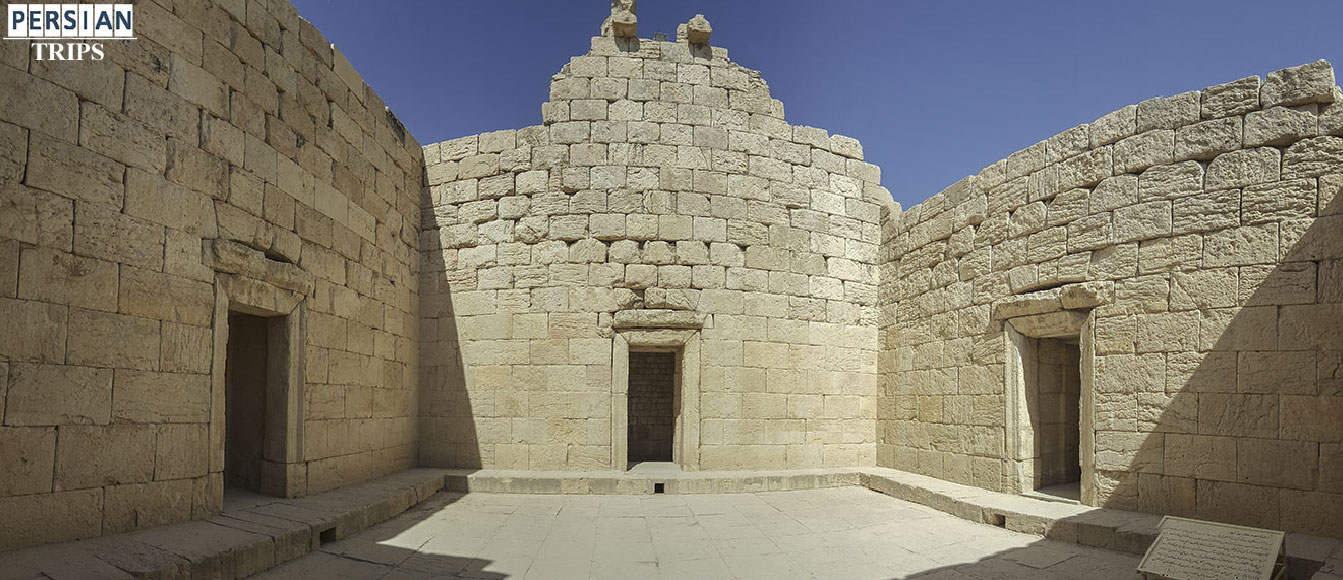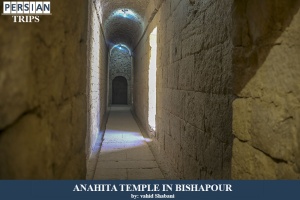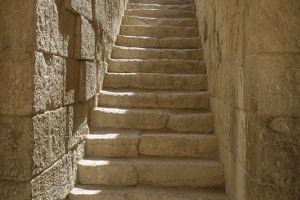Anahita temple in Bishapour

Bishabour Anahita Temple (goddess of water) is one of the most important zoroastrians temple. Due to the sanctity and importance of water in Zoroastrianism and among the Aryans, temples were built to worship and worship water, the temple of Anahita.
It seems that the early Sassanid kings never neglected to perform this religious duty, which brought satisfaction of both Ahuramazda and the people. They built temples and shrines for god Anahita, who was considered the angel of their dynasty and victory, and they promoted Ahura Mazda.There are traces and documents of this praise on the basis of the discovered pillars of Susa and Hamedan, which Ardeshir (founder of the Sassanid dynasty) says, "The gods Mehr and Anahita helped me" and adds, "May Ahura Mazda, Anahita and Mitra take care of me and protect me from any hatred and hostility."
The construction of the Anahita Temple in Bishapurna is unique not only in terms of architecture, but also in terms of regulating and dividing devices and controlling the flow of water, and perhaps it can only be compared to the Temple of Nahid Estakhr.To create such a huge temple, an area measuring 7 × 23 × 27 cubic meters was dug deep into the ground and its foundation was laid according to the planned design to the water of Shapur River, which is 250 meters away from this place. A branch of it flew into this building.Of course, before the construction of this temple, an aqueduct was flowing in this place and Sassanid architects and builders have selected and laid the foundation of the temple according to the passage of water so that this suitable location can be used for the maximum circulation of water in it. Remains of this old aqueduct can still be seen at the end of the western corridor.
The historic Anahita Cube Temple
The historic Anahita Cube Temple was built about 6 meters below ground level, of which only 8 meters high from its natural level of 14 meters was visible , and the rest of the surface is deep in the ground due to its crypt. In its inner courtyard, a shallow reservoir with a capacity of 60 cubic meters of water was built, and around it, a platform was created on which worshipers could gather during religious ceremonies.This platform is made of large pieces of carved stones with dimensions of 47*140 cm. In the middle of each of the entrances, a water channel has been carved into the stones under the floor of the gate so that water can flow into the temple from all three sides of the building when necessary (probably during feasts, celebrations and religious ceremonies).
The water outlet is a well that is 4 meters deep and for its construction, an area 180 cm long and wide has been excavated, which was covered with 4 pieces of 90 90 cm stones of the temple floor type. So that the harmony and the cover of the well with the bottom of the catchment was observed evenly and the water outlet was completely hidden from view.The intrance and exit in this temple has a special order so that the temple water is clean and fresh as much as possible and as much as water enters from three sides, it sinks gradually and imperceptibly into the ground through the three channels. The accuracy and observance of such a thing for the circulation of water, shows the special religious importance and respect and attention to the ancestor of the water angel at that time.
Tags: Attractions, Fars Province, Anahita temple

